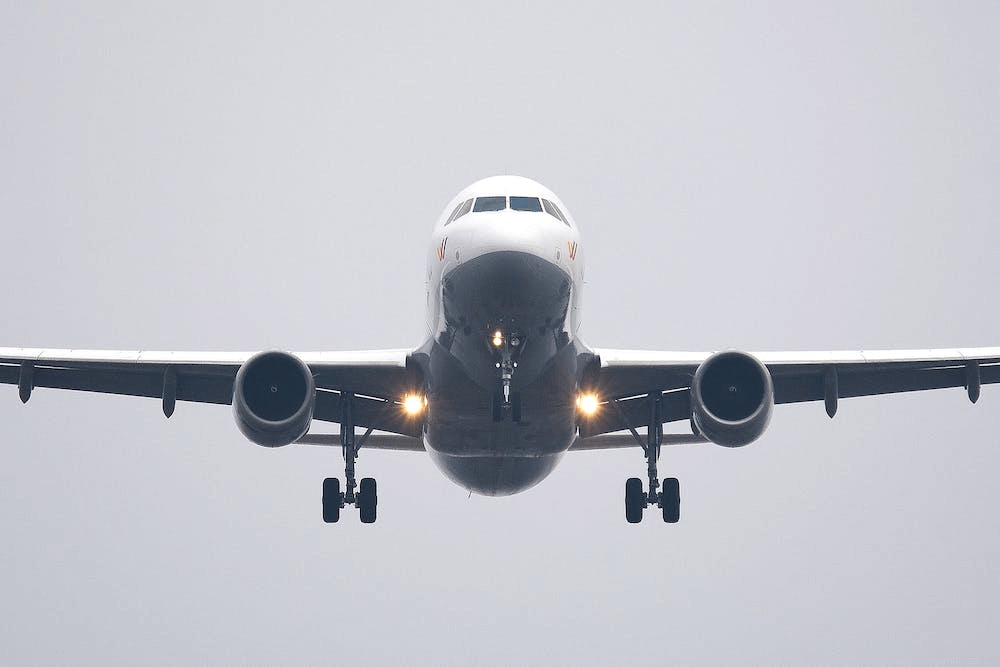📑Table of Contents:
Choosing a name for an airline is a critical step in defining its identity and shaping its future. It’s more than just a brand; it’s a symbol of the adventure, safety, and experiences you promise to your passengers. This guide delves deep into the process of naming an airline, ensuring that your brand captures your imagination and stands out in the crowded skies. let’s dive into it and explore it.

Understanding the Airline Industry
In the dynamic world of the airline industry, the focus extends beyond mere transportation; rather, it revolves around crafting lasting experiences. Initiating this journey, choosing a name for your airline becomes the inaugural step, and it should mirror the essence of aviation, promising a unique and memorable experience for every traveler.
The perfect name is a harmonious blend of innovation, heritage, and aspiration, encapsulating the ethos of your brand. When contemplating a name, consider factors such as innovation and modernity, heritage and tradition, aspiration and experience, and ensure it aligns seamlessly with your airline’s values.
Strive for a memorable and distinctive name that stands out, creating an enduring and resonant identity in the competitive landscape of the airline industry.
The Naming Process
- Initial Brainstorming: Gather a team and brainstorm ideas. Consider your airline’s vision, mission, and core values. What do you want your airline to represent? Is it luxury, speed, safety, global connectivity, or perhaps eco-friendly travel?
- Cultural Sensitivity and Global Appeal: An airline name must resonate across different cultures and languages. Avoid words that may have negative connotations in other languages or cultures.
- Uniqueness and Legality: It’s vital to ensure that your chosen name doesn’t infringe on existing trademarks. Conduct thorough research, including domain availability checks, to ensure your name is legally sound and unique.
Inspiration Sources for Naming an Airline
When naming an airline, inspiration can be drawn from a myriad of sources, embarking on a journey of discovery that leads to a name both unique and deeply resonant with your brand’s identity and customer base. Here’s a deeper dive into various sources of inspiration:
1. Geographical Landmarks and Cultural Heritage:
- Mountains, Rivers, and Cities: Natural landmarks or iconic cities often inspire names that evoke a sense of place and heritage. For example, an airline named after a famous mountain or river can symbolize strength, stability, or fluidity.
- Cultural References: Elements from local or national culture, like folklore, traditional symbols, or historical figures, can lend a unique character to your airline’s name.
2. Astronomical and Natural Phenomena:
- Celestial Bodies: Names inspired by stars, constellations, or planets can evoke a sense of grandeur and exploration. The mystery and beauty of celestial phenomena like asteroids can lead to compelling names. Consider the intricate dynamics of asteroids and how they work – this could inspire a name that suggests adventure and discovery.
- Natural Phenomena: Phenomena like the Northern Lights, ocean currents, or even weather patterns can inspire names that capture the beauty and wonder of the natural world.
3. Mythological and Legendary Sources:
- Gods and Heroes: Names derived from mythology can imbue an airline with a sense of legacy and power. For instance, a name inspired by a god of travel or a legendary explorer can reflect a spirit of adventure and resilience.
- Mythical Creatures: Names based on mythical creatures, like dragons or phoenixes, can symbolize strength, rebirth, and mystical allure.
4. Abstract Concepts and Values:
- Emotions and Experiences: Abstract concepts like freedom, joy, or serenity can be a rich source of inspiration. A name that encapsulates an emotion or experience can create a deep connection with passengers.
- Core Values: Reflecting on the core values of your airline – such as safety, innovation, or sustainability – can lead to a name that directly communicates your brand’s ethos.
5. Linguistic Creativity:
- Wordplay and Neologisms: Inventive word combinations or entirely new words can result in a unique and memorable name. This approach offers creative freedom and can lead to a truly distinctive brand name.
- Multilingual Appeal: Consider names that have a universal appeal or are easily pronounced in multiple languages, ensuring global recognizability.
6. Historical References and Nostalgia:
- Historic Events or Eras: Drawing inspiration from significant historical moments or eras can give your airline a sense of timelessness and heritage.
- Nostalgic Elements: Names that evoke nostalgia can create an emotional bond with customers, suggesting a return to the golden age of air travel.
Naming Trends in the Airline Industry
Understanding current naming trends in the airline industry is crucial for crafting a name that resonates with modern travelers while standing out in a competitive market. Let’s delve into some of these trends and examine a case study to glean insights into successful naming strategies.

1. Geographical and Cultural Names:
- Regional Names: Airlines often use names that reflect their geographic origin, as these names carry a sense of place and identity. They can evoke feelings of regional pride and are easily recognizable.
- Cultural Significance: Names that draw from cultural heritage or landmarks resonate with both locals and travelers who seek an authentic experience.
2. Aspirational and Experiential Names:
- Adventure and Luxury: Names that suggest a sense of adventure or luxury appeal to travelers’ aspirations. These names can evoke feelings of escapism or indulgence, aligning with the experiences the airline promises.
- Emotive Experience: Using names that evoke a specific emotion or experience, such as “Serenity Airways” or “Adventure Flights,” directly communicates the kind of experience passengers can expect.
3. Simplicity and Memorability:
- Short and Sweet: There’s a trend towards shorter, more memorable names. These names are easier for customers to recall and are more effective in marketing and branding.
- Clarity and Pronunciation: Names that are easy to pronounce and understand in multiple languages have a global appeal, an essential factor for international airlines.
4. Innovative and Unique Names:
- Neologisms and Creativity: Some airlines opt for unique, created names. These neologisms can stand out in a crowded marketplace and become synonymous with the airline’s brand.
- Hybrid Names: Combining words or concepts to create a new name is a popular trend. This approach allows for unique branding opportunities.
5. Sustainability and Future-Focused Names:
- Eco-Conscious Naming: Reflecting the growing trend of environmental consciousness, some airlines are choosing names that emphasize sustainability and eco-friendly practices.
- Futuristic Names: Names that suggest innovation and a forward-looking approach can appeal to tech-savvy travelers and reflect an airline’s commitment to progress.
Case Study: Emirates Airlines
Background: Emirates Airlines, named after its home, the United Arab Emirates, is a prime example of effective airline naming. This name encapsulates both geographic origin and a sense of global reach, offering valuable insights into strategic naming.
Analysis:
- Regional Pride and Identity: The name ‘Emirates’ immediately connects the airline to its roots in the UAE, a region known for luxury, innovation, and connectivity. Additionally, it carries a sense of national pride and quality assurance.
- Global Appeal: While it has a strong regional association, the name is also broad enough to have a global appeal. It suggests a wide-reaching, international network, aligning with the airline’s extensive route map.
- Brand Extension: The name has enabled Emirates to build a strong brand, extending beyond just airline services to encompass an entire lifestyle of luxury and quality.
Lessons Learned:
- Balancing Local and Global: A successful airline name can honor its local roots while appealing to a global audience.
- Brand Consistency: The name should align with the airline’s brand values and the experience it promises to deliver.
- Flexibility for Growth: Choose a name that allows for potential growth and expansion into new markets and services.
Important Considerations
When seeking inspiration, it’s crucial to ensure that the name is culturally sensitive, easy to pronounce, and aligns seamlessly with your brand’s global image. The objective is to discover a name that not only stands out but also embodies the essence of your airline’s identity and values.
By exploring these diverse sources of inspiration, you can craft a name that not only captures the imagination but also resonates with the spirit of your airline. This process paves the way for a strong and distinctive brand presence in the aviation industry, ensuring that your airline name becomes a powerful and memorable symbol in the minds of passengers around the world.
Testing Your Airline Name
When searching for inspiration, it’s crucial to ensure that the chosen name is culturally sensitive, easy to pronounce, and aligns seamlessly with your brand’s global image. The goal is to discover a name that not only stands out but also encapsulates the essence of your airline’s identity and values.
By exploring various sources of inspiration, you can meticulously craft a name that not only captures the imagination but also resonates with the spirit of your airline. This thoughtful process lays the foundation for a robust and distinctive brand presence in the aviation industry. Ultimately, your airline name becomes a potent and memorable symbol in the minds of passengers worldwide, fostering a strong connection and recognition for your brand.
1. Market Research and Surveys:
- Conducting Surveys: Utilize online surveys to gather feedback on your proposed names. Through these surveys, ask respondents for their first impressions, feelings, and associations with each name.
- Diverse Audiences: Ensure your survey reaches a diverse group of people, including those within your target market and outside of it. This approach helps in understanding how the name is perceived across different demographics.
2. Focus Groups:
- In-Depth Discussions: Organize focus groups to have more detailed conversations about the potential names. Focus groups can provide nuanced insights that surveys might miss.
- Scenario Testing: Present the names in various scenarios, such as a boarding announcement or in an advertisement, to see how they work in context.
3. Social Media Polls:
- Engaging with Potential Customers: Use social media platforms to conduct polls. This not only provides feedback but also engages potential customers in the naming process.
- Analyzing Feedback: Monitor the comments and discussions that emerge around the names. Social media feedback can often be more candid and spontaneous.
4. Cultural Sensitivity Check:
- Global Appeal: Especially important for international airlines, ensure that the name does not have unintended meanings or negative connotations in different languages and cultures.
- Expert Consultation: Consider consulting with cultural experts or linguists to vet the names for any potential issues.
5. Brand Alignment Evaluation:
- Consistency with Brand Image: Evaluate how well each name aligns with your airline’s brand image and values. Assess whether the name effectively conveys the message and emotion you want to associate with your brand.
- Future-proofing: Consider how the name will age over time and whether it can accommodate potential growth and brand evolution.
6. Trademark and Legal Availability Check:
- Legal Clearance: Before finalizing the name, check for trademark availability to avoid legal complications. This includes domain names and social media handles.
- Securing Rights: Once a name is chosen, take steps to secure the necessary trademarks and digital properties.
Real-World Testing Example
Case Study:
Imagine an airline testing the name “Azure Skies.” Surveys could gauge initial reactions to the name, while focus groups might explore deeper emotional connections. Social media polls could be employed to assess public appeal. Furthermore, a cultural sensitivity check would ensure the name is appropriate globally, and a brand alignment evaluation would confirm its fit with the airline’s image of offering serene, high-quality travel experiences. Finally, a legal check would ensure the name is available for use.
The Role of Digital Presence
In the digital era, your airline’s name is also its online identity. It should be easy to spell, memorable, and SEO-friendly. Additionally, protecting your digital assets is critical. Incorporate cybersecurity tips like how to protect your password into your strategy to secure your online presence.

Conclusion
Embarking on the journey of naming your airline is a creative process that involves strategic thinking and thorough market research. This endeavor is a delicate balance where your brand’s essence seamlessly meets public appeal.
Crucially, a well-chosen name represents the first step in ensuring your airline’s journey goes beyond reaching destinations; instead, it’s about capturing hearts and minds.
Approach this challenge with enthusiasm and creativity. Allow your airline’s name to be the inaugural promise of an unforgettable journey!





